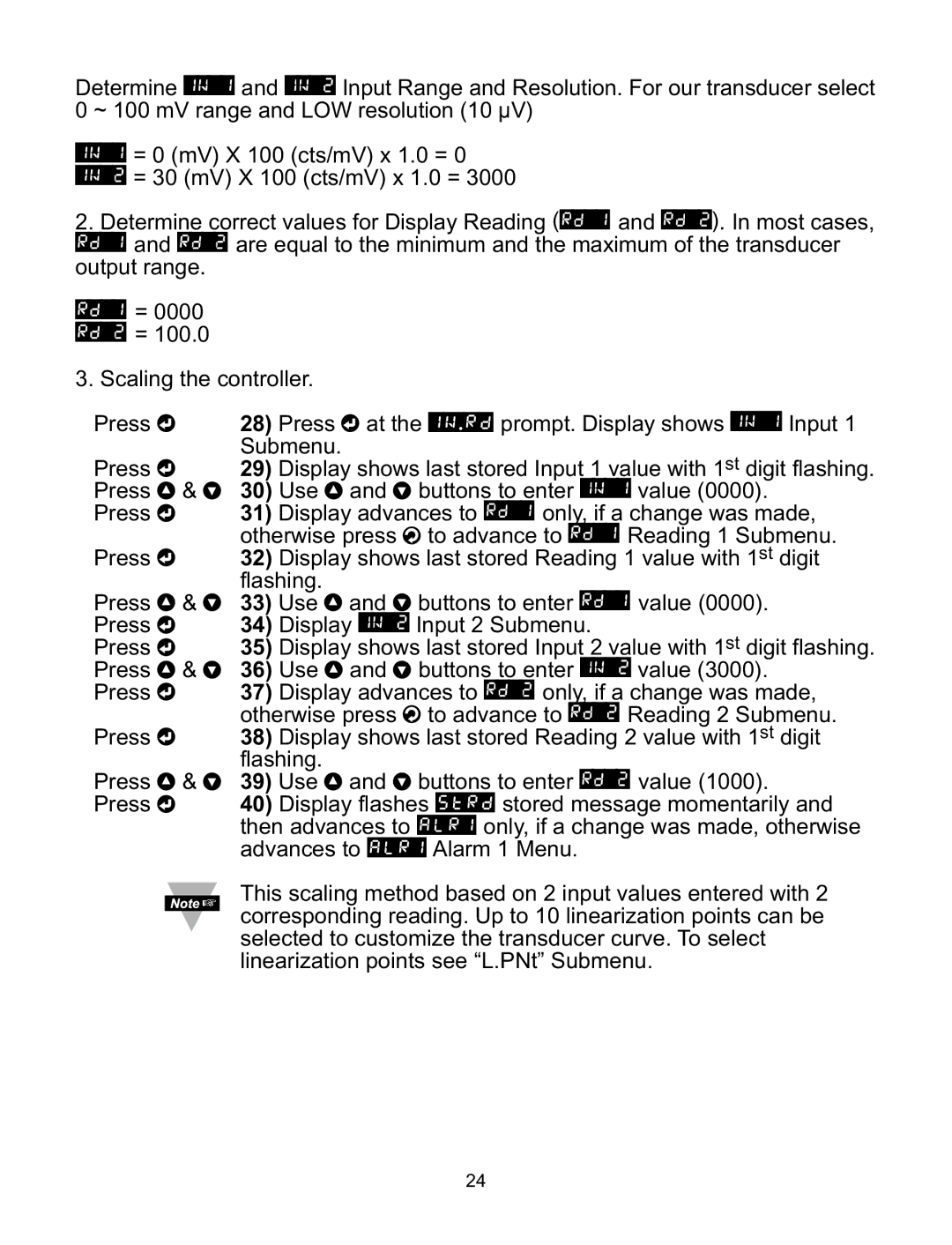Determine IN!1 and IN!2 Input Range and Resolution. For our transducer select 0 ~ 100 mV range and LOW resolution (10 µV)
IN!1 = 0 (mV) X 100 (cts/mV) x 1.0 = 0
IN!2 = 30 (mV) X 100 (cts/mV) x 1.0 = 3000
2.Determine correct values for Display Reading (RD!1 and RD!2). In most cases, RD!1 and RD!2 are equal to the minimum and the maximum of the transducer output range.
RD!1 = 0000
RD!2 = 100.0
3. Scaling the controller.
Press d 28) Press d at the IN.RD prompt. Display shows IN!1 Input 1 Submenu.
Press d 29) Display shows last stored Input 1 value with 1st digit flashing. Press b & c 30) Use b and c buttons to enter IN!1 value (0000).
Press d 31) Display advances to RD!1 only, if a change was made, otherwise press a to advance to RD!1 Reading 1 Submenu.
Press d 32) Display shows last stored Reading 1 value with 1st digit
flashing.
Press b & c 33) Use b and c buttons to enter RD!1 value (0000).
Press d 34) Display IN!2 Input 2 Submenu.
Press d 35) Display shows last stored Input 2 value with 1st digit flashing. Press b & c 36) Use b and c buttons to enter IN!2 value (3000).
Press d 37) Display advances to RD!2 only, if a change was made, otherwise press a to advance to RD!2 Reading 2 Submenu.
Press d 38) Display shows last stored Reading 2 value with 1st digit
flashing.
Press b & c 39) Use b and c buttons to enter RD!2 value (1000).
Press d 40) Display flashes STRD stored message momentarily and then advances to ALR1 only, if a change was made, otherwise advances to ALR1 Alarm 1 Menu.
This scaling method based on 2 input values entered with 2 corresponding reading. Up to 10 linearization points can be selected to customize the transducer curve. To select linearization points see “L.PNt” Submenu.
24
